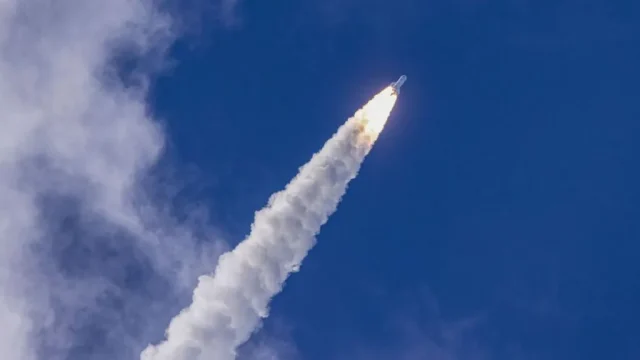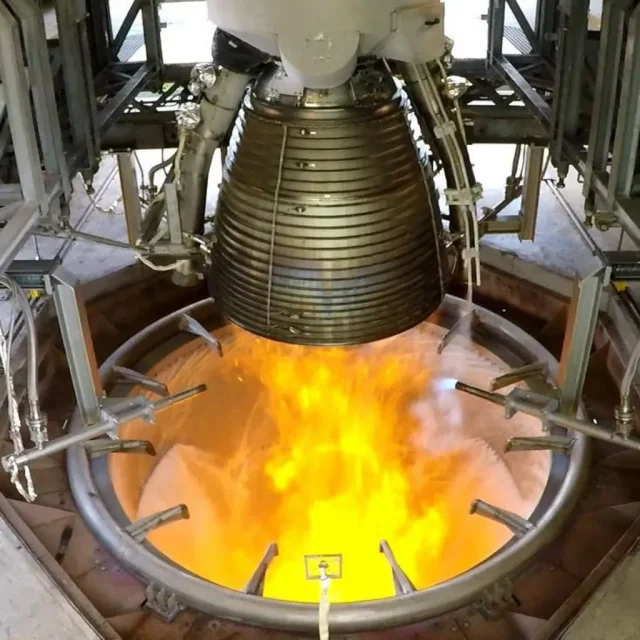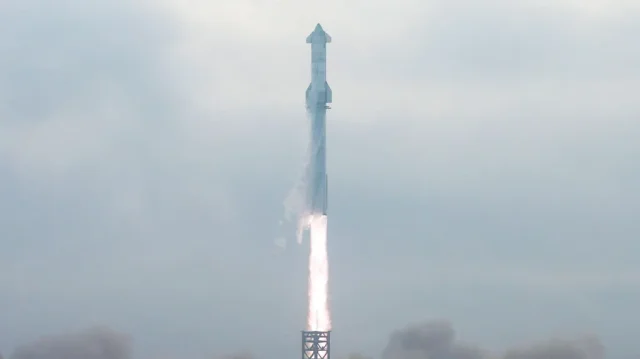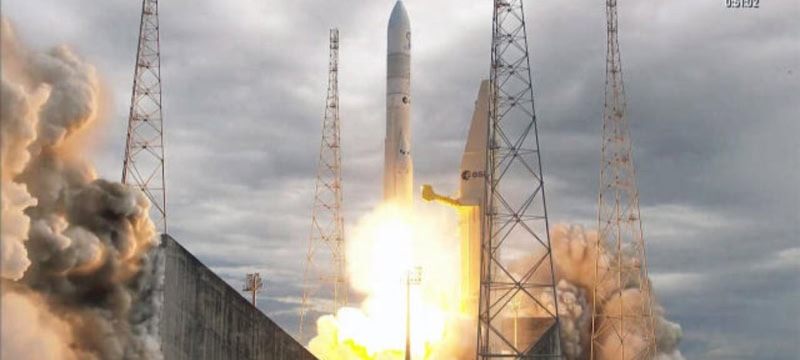Europe’s new large rocket, Ariane-6, has launched on its first flight. The launch occurred from a pad in French Guiana at 16:00 local time (19:00 GMT), carrying several satellites for a demonstration mission. Ground crews in Kourou cheered as the rocket, developed at a cost of €4bn (£3.4bn), ascended into the sky.
However, near the end of the flight, the rocket’s upper stage experienced an issue, leading to the premature shutdown of its auxiliary power unit (APU). This prevented the planned orbit adjustment and the jettisoning of two re-entry capsules.
Read more: Climber Frozen Body Found In Peru After 22 Years
Despite this anomaly, the mission was still deemed successful. Josef Aschbacher, the director general of the European Space Agency, expressed relief and excitement, noting the significance of launching a new heavy-lift rocket, which occurs only every few decades.
Ariane-6 aims to serve as a dependable rocket for European entities seeking autonomous access to space, despite concerns about its design potentially limiting future opportunities. Unlike newer American counterparts focusing on reusability, Ariane-6, like its predecessor Ariane-5, is expendable, necessitating a new rocket for each mission. However, European space officials are optimistic about its niche potential.
While visually similar to Ariane-5, Ariane-6 integrates advanced manufacturing techniques like 3D printing and friction stir welding for faster and more cost-effective production. It will operate in two configurations: “62” with two solid-fuel side boosters for medium payloads, and “64” with four strap-on boosters for heavier satellites. The core stage includes an upper stage for precise orbital placement of payloads.
The upper stage features multiple restart capabilities, crucial for deploying large satellite constellations and mitigating space debris by enabling controlled re-entry. Although the inaugural flight did not demonstrate this capability, engineers remain hopeful about Ariane-6’s future. Martin Sion of ArianeGroup emphasized the adaptability of flight profiles based on mission data, while Stéphane Israël of Arianespace confirmed readiness for subsequent launches to support Ariane-6’s deployment schedule.

Falcon 9 vs Ariane 6
Inaugural flights pose significant risks, often encountering anomalies or failures in new rocket designs. Ariane-5 infamously self-destructed 37 seconds after liftoff in 1996 due to a control software error. Despite this setback, subsequent revisions of the rocket dominated the commercial launch market until the rise of Elon Musk’s reusable Falcon-9 rockets in the 2010s, which offered lower costs and higher flight rates, challenging Ariane-5’s competitiveness.
Europe aims to adopt reusability but won’t have the necessary technologies ready until the 2030s. Meanwhile, Musk continues to innovate with larger rockets promising further cost reductions. Ariane-6 faces these challenges in a competitive landscape.
Lucia Linares, overseeing space transportation strategy at Esa, emphasized the full order book for Ariane-6, indicating customer confidence in the rocket as a solution to their launch needs.

Launch contracts cover the initial three years of Ariane-6 operations, with plans for 18 launches designated for Jeff Bezos’ Kuiper satellite constellation. European officials aim to achieve a launch frequency of approximately one per month for Ariane-6.
Pierre Lionnet, from space consultancy ASD Eurospace, highlighted the importance of securing demand from European institutional customers and expanding to additional commercial clients beyond Kuiper to establish a market foothold. He emphasized the critical role of competitive pricing against Falcon-9, noting potential challenges if Ariane-6 consistently faces lower offers.
Ariane-6 is a collaborative effort among 13 member states of Esa, led by France (56%) and Germany (21%), with committed annual subsidies of up to €340m to support initial operational phases. Although the UK’s direct involvement in Ariane ended with the retirement of Ariane-4 in 2003, several UK companies continue to supply components commercially, ensuring British spacecraft will still be launched aboard Ariane rockets.










